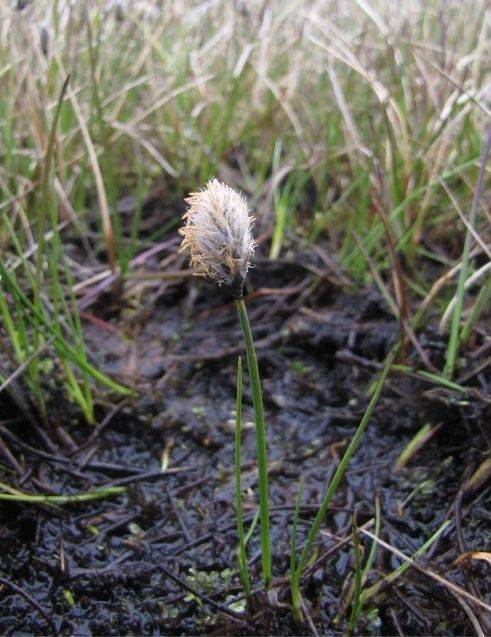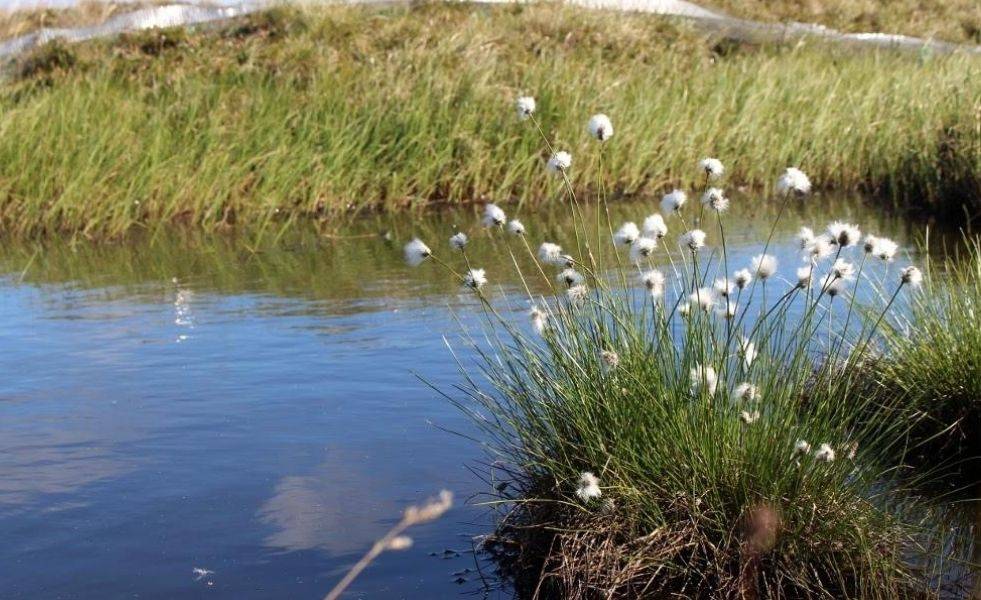Cottongrass
Also called bog cotton
- Iñupiaq name: Pikniq, Pikniik, Pitniq, or Pitniik or Aqłakataq
- Family: Cyperaceae
- Scientific name: Eriophorum spp. (E. augustifolium, E. russeolum, E. scheuchzeri, and E. vaginatum) (all varieties are edible and the distinction between them is not important for foraging purposes).
- Distinguishing characteristics: Tall sedge with skinny grass-like leaves. Small brownish-yellow flowers develop seeds with many cotton-like hairs by mid-summer. Every stem has a cotton head.
- Similar species: Since all species of cottongrass are edible and very similar looking, it isn't important for foraging purposes to know the difference between all of them. To identify a cottongrass plant, look for fluffy hairs on the end of each stem!
- Habitat: Dry to moist tundra, often near ponds.
- Best time to harvest: Early summer
- Uses: Young stem bases and roots can be eaten raw, cooked, or preserved in seal oil.



Photos courtesy of the Grand Valley State University Arctic Ecology Program
